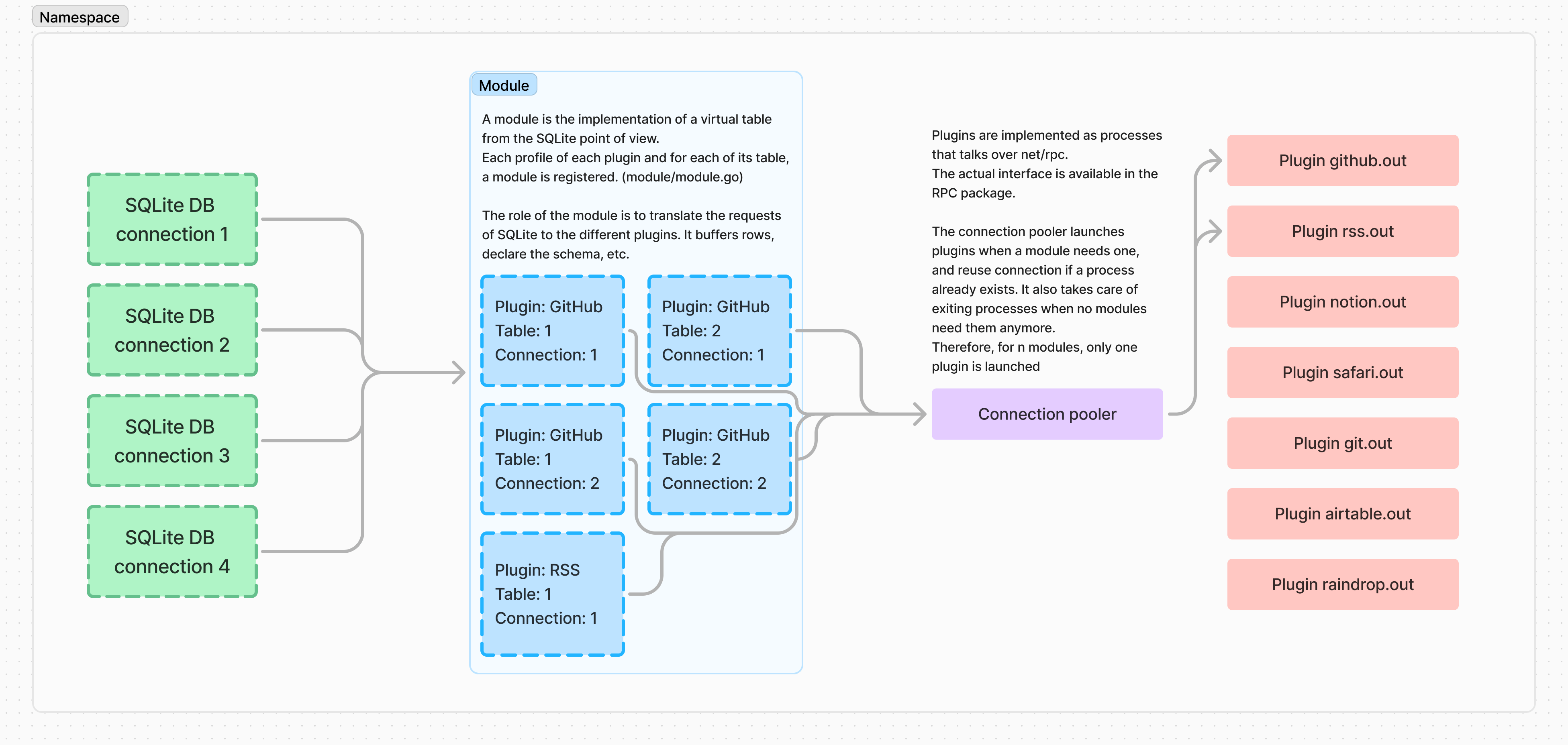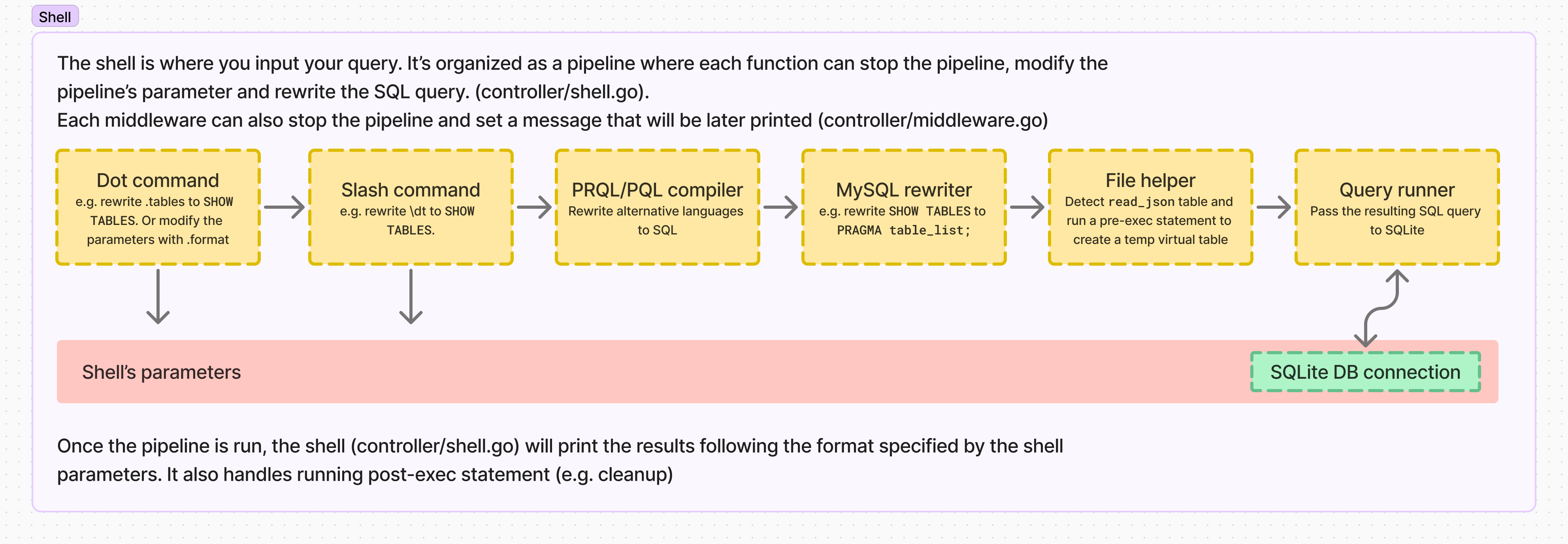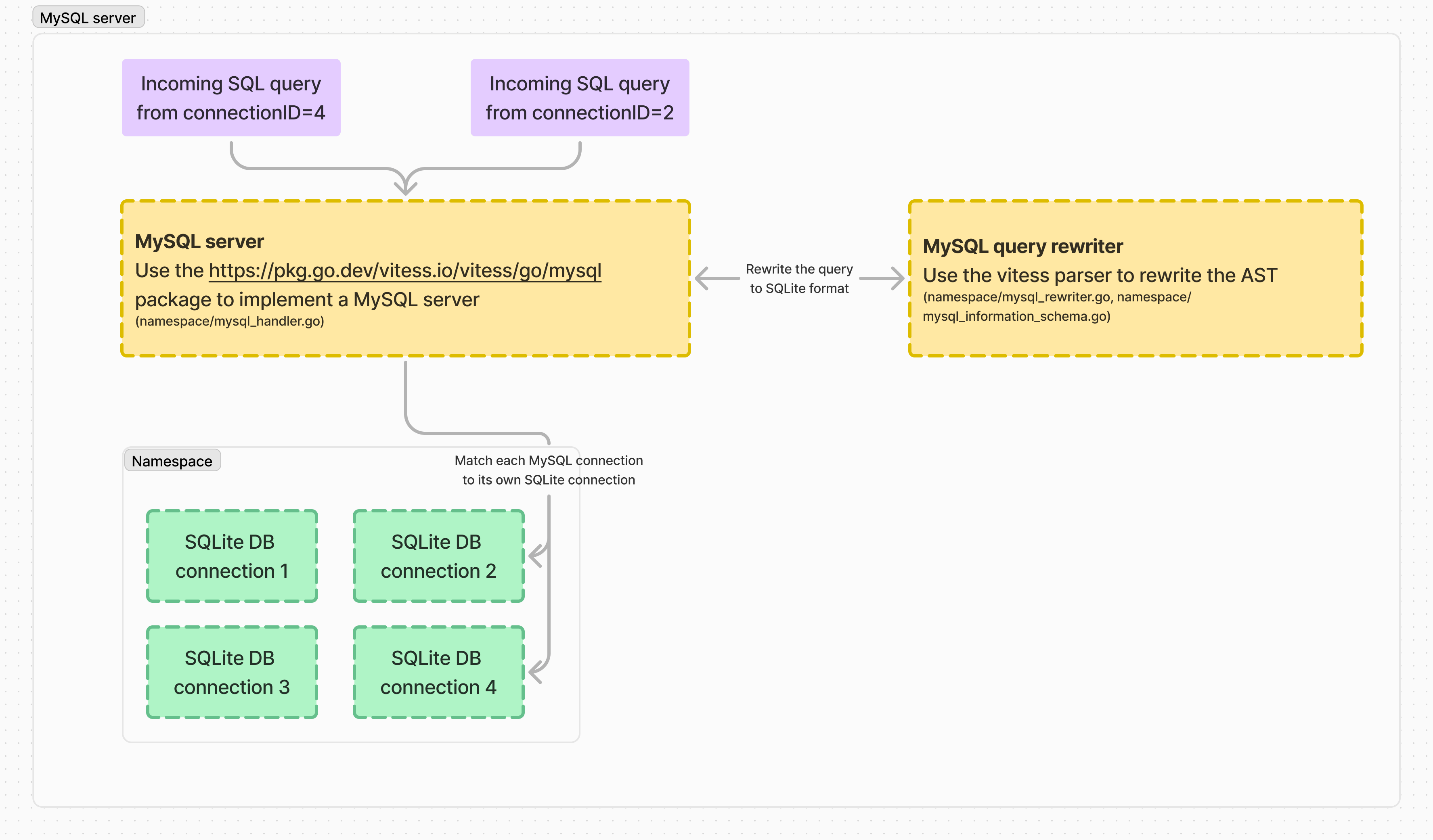Architecture
Anyquery is a SQL query engine that enables you to execute SQL queries on virtually anything. It is built on top of SQLite and Vitess. Thank you for your interest in the architecture of Anyquery. This document explains how Anyquery is built and how it works.
Core technologies
Section titled “Core technologies”Anyquery is built on top of two main technologies: SQLite and Vitess.
SQLite
Section titled “SQLite”SQLite is a C library that provides a lightweight yet powerful SQL database engine. It has a virtual table mechanism that allows you to extend the SQL engine with custom tables. Anyquery uses this mechanism to provide tables that interact with external systems.
Vitess
Section titled “Vitess”Vitess is a database clustering system for horizontal scaling of MySQL. While we don’t use its clustering capabilities, we use it to provide a MySQL-compatible server that can interact with the virtual tables provided by SQLite. We also leverage its SQL parsing capabilities to rewrite SQL queries on the fly so that MySQL queries can be executed on SQLite tables.
Architecture
Section titled “Architecture”Here is a few diagrams that explain how Anyquery works.
Namespace
Section titled “Namespace”They represent an instance of Anyquery. Each namespace has its own SQLite database (with multiple connections possible) and its own MySQL server.

The shell is a command-line interface that allows you to interact with Anyquery. It connects to a namespace and executes SQL queries.

MySQL server
Section titled “MySQL server”Anyquery can act as a MySQL server, allowing you to connect to it using any MySQL client. This is useful if the shell client is not sufficient for your needs. The MySQL server connects to a *sql.DB object that interacts with the SQLite database. It rewrites the SQL queries on the fly so that MySQL queries can be executed on SQLite tables.

Folder structure
Section titled “Folder structure”Here is the folder structure of Anyquery:
cmd/: contains the commands declaration for spf13/cobra.controller/: contains the controllers that handle each command execution.module/: contains the modules that acts as virtual tables for SQLite.module/module.gocontains the virtual table for SQLite that connects to the plugins.
Other files in this folder are the virtual tables that read files (json, csv, etc.).namespace/: contains the namespace that manages the SQLite database and the MySQL server. It also features views that acts asinformation_schemaand the query rewriter. Finally, it defines a few SQL functions that are not supported by SQLite.other/: contains theprqlbinding.plugins/: contains the plugins and extensions that can be downloaded from the registry. These are not subject to the Contributor License Agreement (CLA) and the AGPL license.rpc/: contains the client/server RPC communication and helpers for writing a plugin.website/: contains the website that is built with Astro and hosted on Cloudflare Pages.
Additional resources
Section titled “Additional resources”I don’t have the time to write a full documentation on the architecture of Anyquery. However, feel free to ask me any question on the GitHub discussions or by email at contact@anyquery.dev. I will be happy to answer your questions and complete this document with the information you need.
